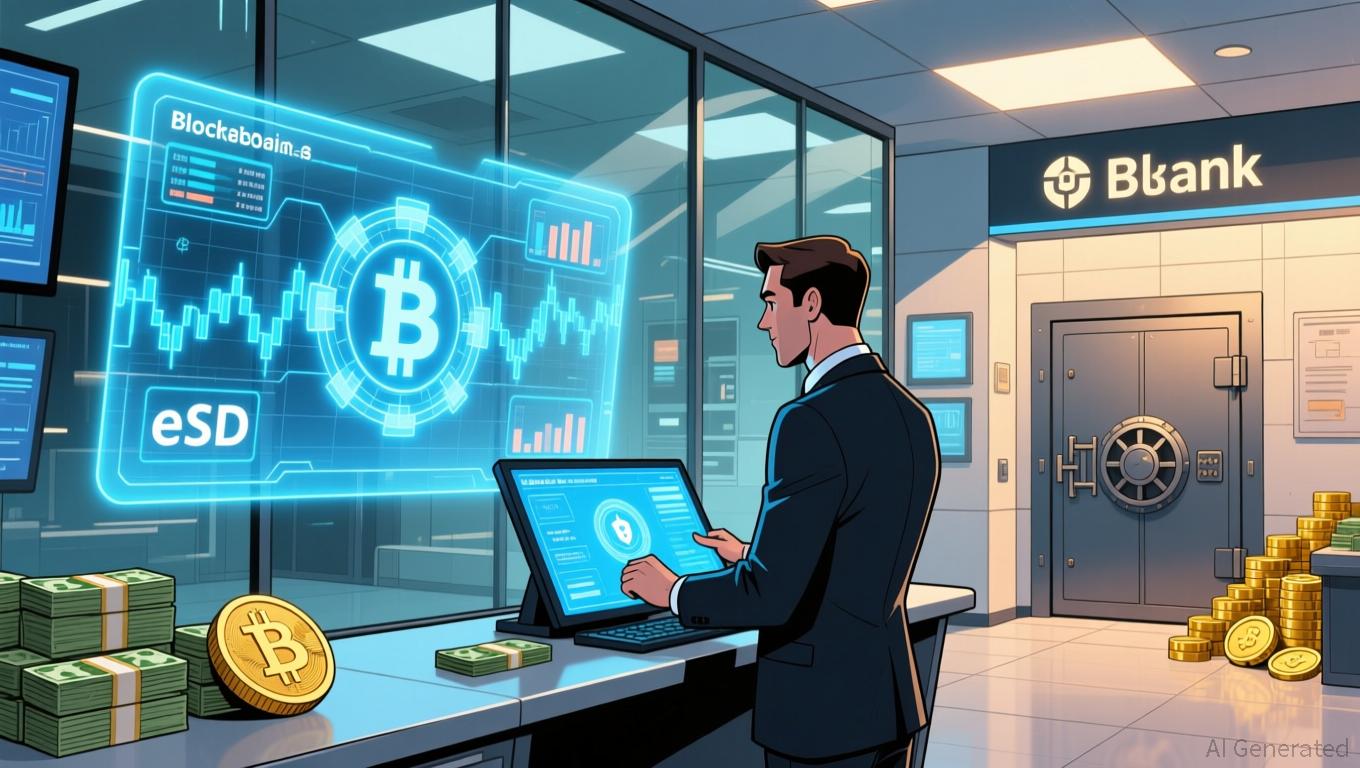Supervised Blockchain Banking Connects Traditional Finance and Digital Assets
- Telcoin becomes first U.S. digital asset bank with Nebraska regulatory approval, launching eUSD - the first bank-issued stablecoin backed by U.S. deposits and treasuries. - JPMorgan's JPMD deposit tokens enable instant 24/7 transactions on Base blockchain, offering yield-generating digital claims on actual bank deposits unlike traditional stablecoins. - Thunes' blockchain infrastructure solutions bridge digital-physical finance gaps, supporting $10B market growth by enabling seamless fiat-digital asset c
The landscape of digital asset banking in the United States is experiencing a major transformation as Telcoin achieves a groundbreaking regulatory milestone, becoming the first company to receive approval to operate a regulated digital asset bank in the nation. On November 13, Telcoin revealed it had secured its final charter from the Nebraska Department of Banking and Finance, officially launching the Telcoin Digital Asset Bank. This achievement makes Telcoin the inaugural Digital Asset Depository Institution in the U.S., representing a significant step in connecting blockchain technology with established financial systems. Telcoin’s main offering, eUSD, is set to be the first U.S. dollar stablecoin issued by a bank and available on the blockchain, as highlighted in a
Backed entirely by U.S. bank deposits and short-term treasuries held in regulated accounts, the eUSD stablecoin is designed to give individuals and businesses a reliable and compliant digital cash option for payments, money transfers, and savings. Unlike stablecoins that are unregulated or based offshore, eUSD’s bank-issued model addresses regulatory concerns about systemic risk while utilizing the efficiency and transparency of blockchain. Paul Neuner, CEO of Telcoin, stated that the charter demonstrates “a bank can responsibly issue on-chain Digital Cash and work in full cooperation with U.S. regulators,” and noted that eUSD will make blockchain benefits accessible for daily financial activities in a straightforward way, according to a

JPMorgan Chase & Co. (JPM) is also advancing in the digital asset arena with its JPM Coin (JPMD) project. The bank has started deploying deposit tokens on the Base blockchain, which represent dollar deposits held at JPMorgan. Unlike stablecoins, JPMD serves as a “deposit token,” providing a digital representation of actual bank deposits and enabling round-the-clock instant transactions. JPMorgan piloted this solution with companies such as Mastercard and
The structure of JPMD allows corporate clients to earn interest on their balances while retaining the security of conventional deposits. This sets it apart from most stablecoins, which generally do not offer interest. JPMorgan’s Kinexys Digital Payments network, which already handles $3 billion in daily transactions with traditional currencies, now incorporates JPMD, providing institutions with a cost-effective and efficient alternative to legacy payment systems, according to Cryptopolitan.
The integration of regulated digital assets with established financial services is accelerating, fueled by infrastructure advances such as Thunes’ new Account Top Up and Withdrawal offerings. These solutions help major digital asset platforms enable smooth deposit and withdrawal processes, linking blockchain users with traditional banks. By overcoming compliance and operational challenges, Thunes aims to support the anticipated $10 billion expansion of the digital asset market in the coming year, as reported by
Collectively, Telcoin’s eUSD, JPMorgan’s JPMD, and Thunes’ infrastructure developments point to a more mature environment where digital assets and conventional finance operate side by side. As regulatory frameworks like the GENIUS Act continue to evolve, the financial sector is poised for wider adoption of blockchain-based solutions, transforming the movement of money in the digital era.
Disclaimer: The content of this article solely reflects the author's opinion and does not represent the platform in any capacity. This article is not intended to serve as a reference for making investment decisions.
You may also like
Tribes reduce the numbers of reintroduced buffalo herds as governmental inaction violates treaty commitments
- U.S. government shutdown forced Native American tribes to cull restored bison herds for food as federal aid programs collapsed. - Fort Peck Tribes slaughtered 30 bison (12,000 lbs meat) to support members facing 65% reduced SNAP benefits during funding freeze. - Over 400 lbs bison meat distributed by Lower Brule Sioux, while Comanche and Mi'kmaq tribes provided deer/moose to food banks. - Crisis exposed systemic failures in federal aid, with 42 million Americans facing reduced benefits and tribal leaders

Crypto Bull Market: Bitwise’s Matt Hougan Predicts Big Rally Ahead
Taiwan Considers Adding Bitcoin to National Strategic Reserves
Metaplanet Posts Strong Q3 Growth and Addresses Governance Claims